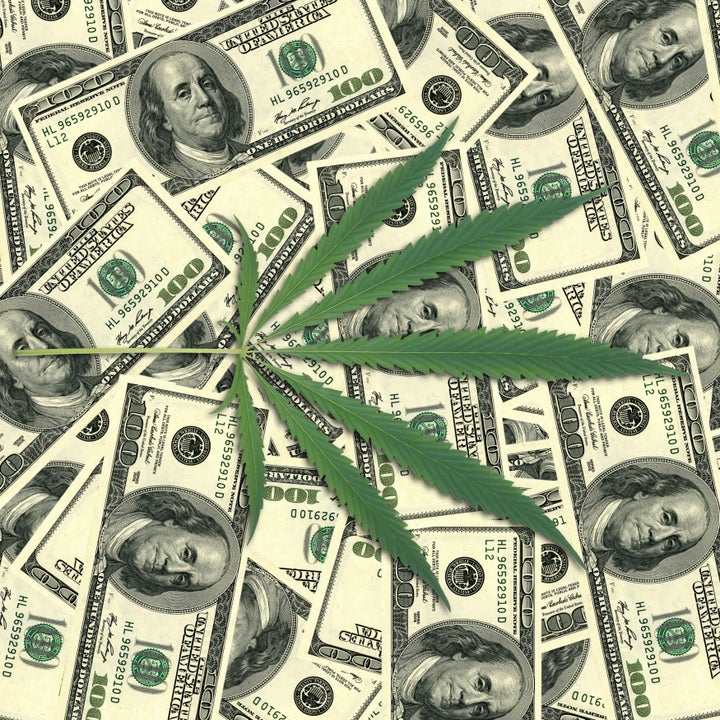
Yes, I’m going to go “there” again. I’m going to address the topic of marijuana legalization. But not because I want to dictate what American citizens do behind closed doors in their free time, or because I claim to know the precise entirety of the long-term effects – both positive (medicinal possibly) and negative – of this drug.
I’m going to dive into this topic again because you, the reader and the pro-pot voter, need to know that you’re being duped.
I apologize for being blunt about your blunt, but it’s true.
As of the New Year, marijuana is going to be legal for either recreational or medicinal use in 29 states and the District of Columbia – over half the country.
But hear this: the current “fight” for legalization is much less about your freedoms and much more about big business making big money at your expense. It’s about lobbyists and an industry with no federal oversight. Since marijuana is illegal at the federal level, you get no quality standards or oversight on the conditions where it is grown, processed, packaged, or sold. It’s an industry where they need to create more users to stay in business. It’s about commercialization not decriminalization, not local folks making a living.
As Ben Cort articulates in his book Weed, Inc., “We are considering a massive shift in policy that will result in more access to a substance we know little about in its current form. We must not allow the conversation to be defined just by those who stand to profit.”
It seems that when Americans are asked about their position on legalizing marijuana, many respond in favor of legalizing based on medicinal or criminal beliefs. When a recent Smart Approaches to Marijuana (SAM) poll conducted in New York asked a follow up question that adjusted for the fact that personal marijuana possession is already decriminalized and medicalized in New York, respondents’ support for legalization dropped by a third.
Our current propositions to legalize marijuana are funded by deep pockets, to be sure. Recreational use is far different than medicinal use, and the lobbyists couldn’t care less about the communities in which they plan to place their shops.
“One of the things that we thought was going to happen when [recreational] marijuana was legalized was that drugs would be taken out of our community,” said Candi CdeBaca, an education and community activist in Colorado whose longtime family home is steps from a commercial grow operation. “What happened was that the drugs stayed—and the drug dealers changed.”
We’re not passing laws that pave the way for our buddy’s “mom and pop shop” to grow and make some money that provides for their families. We’re passing laws that create a whole new industry that clearly markets to kids with their gummy bears and cartoon advertisements, cost us more than we will ever get back as communities in taxes, and has created a large and powerful lobby driven by big business.
Add to this the fact that the level of THC in today’s marijuana is literally mind-boggling, and due to its federal illegality, there are no guidelines or regulations on its potency. This is not the marijuana of the past, to be sure.
“Back in the day,” weed was about 4% THC (the part of the plant that gets you high). Today, the national average is above 12% and Colorado is seeing (and advertising) concentrations of anywhere from 40-95%.
Candy edibles with curious childish names and packaging like “Rasta Reese’s,” “Buddahfinger” and Pot Tarts can be highly concentrated and have multiple servings per piece. Gummy bears win the contest with upwards of 10 servings of THC in each gummy bear (Ever eat 1/10th of a gummy bear? Didn’t think so.) Consider too, that edibles make up 40% of all the THC being sold in Colorado and you have a dangerous scenario in many homes.
These increasingly potent strains hit inexperienced users hard. Data analyzed by the Colorado Department of Public Health and Environment found that emergency room visits for marijuana-related incidents increased 29% from the years just before commercialization to 2014 through mid-2015.
Even so, data on today’s marijuana use is severely lacking. There are no reliable, long-term outcome studies because potency has increased so rapidly and there is no infrastructure or oversight. We don’t even hold the folks who market these products to the same advertising rules or regulations the alcohol and tobacco companies must adhere to. And this is not by accident.
What we do know is that marijuana is addictive. Yes, less addictive than heroin or cocaine, but addictive nonetheless. I see it day-in and day-out in my field of addiction treatment, and I hear the stories from clients and families alike. Argue if you will, but behind you stands a long line of families whose lives have been completely upturned from the drug. And the big business of marijuana will need to continue to seek new and more frequent users.
As Cort proposes in his book, what we really need to do as a society is to deal with the reasons why we want to get high in the first place. Is it anxiety? Depression? Let’s treat these symptoms with appropriate therapy, provide adequate mental health coverage, so that one does not have to use mind-altering substances to get by. Then, we will have truly succeeded at making progress. Habitual drug use is not going to resolve our problems.
The bottom line is that we have enough issues in this country these days. This country doesn’t need another legal intoxicant. Haven’t we learned enough with alcohol and tobacco?
Need help with substance abuse? In the U.S., call 1-800-RECOVERY or 800-662-HELP (4357) for the SAMHSA National Helpline.
